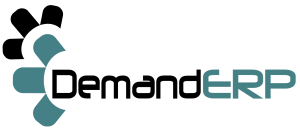Before you are looking into the SaaS CRM system you stop and read about the SaaS CRM pricing model or models that are offered. This information could shape your decision regarding choosing the SaaS CRM software.
There are very few SaaS pricing models but there some tricks that you might want to know about. Basically there are three main pricing models that most CRM SaaS software vendors follow; the SaaS pay per user pricing model, the unlimited use model, and pay for what you use model. In the end of this article I give two important advises!
Pay per User Pricing Model
The CRM SaaS pay per user pricing models is the most common mode and is very simple; you are charged according to the number of users that use the CRM system application.
The billing occurs periodically. If you are using this model I highly recommend paying close attention to how many users are registered and even assigning a role in your organization that will be responsible for the registration of users; If you let the users register independently you might lose control and get a blown bill at the end of each month.
This could easily affect the software costs. The responsible party would control authorizations or cancellations of accounts when users leave the company or are transferred to another department.
Pay per User Pricing Model – Multiple User Pricing
Another variation of the pay per user pricing model is the pricing of mass or bulk of users. One may refer to it as user bracket registration. With this model for example, a package for 2 to 50 users will be priced other than the package for 51 until the 100 user.
This helps the CRM vendors ensure profitability. This model could be combined with variation of features or functionalities for each layer of bulk users.
The CRM SaaS unlimited Use Model
Another pricing model is the unlimited use model where the organization is billed each month for an agreed fee and receives a package of services regardless to the number of users.
The main advantage is the transparency of the CRM software costs; the monthly bill remains the same from one billing to the next for an unlimited number of users. This model is usually available for small organizations – the CRM vendor knows that user might share logins in order not to increase costs. In return he offers the organization a package for an accepted price.
Pay for what You use Pricing Model
With the CRM SaaS pay for what you use pricing model the client is billed for the actual resources that it used in a period of time. Resources may be users or accounts, web traffic, use of applications and volume of storage space.
The main advantage is that the organization is required to pay for the actual volume of resources consumed. You will be surprised to know how many applications of the CRM system will not be applicable or usable for you – so why pay for them. If you maintain 100 customers and 100 products – you do not need 1 terabyte of table space. This model is relative rare in the CRM SaaS market.
Bargain for the best Price
For conclusion I must add one important input – do not be afraid to bargain with the CRM vendors. The competition today is fierce and the CRM SaaS vendors know that your relationship are long termed – so they will come towards you and agree to compromises.
You may bargain for suggested features, applications and fee for users. How would you know if there is a room for negotiation?
The first parameter is quantity. Let us assume that you are looking for a system for 1000 users. I am sure the CRM vendor will reconsider the monthly fee if he knew he is selling 1000 licenses for the next 5 years.
The second parameter is the market position of the SaaS CRM vendor – if he is a strong and well know player like SalesForce or SugarCRM then maybe it will be useless to negotiate. But if the SaaS CRM vendor is small and would like to penetrate the market maybe then it will be worthwhile.





Comments are closed.